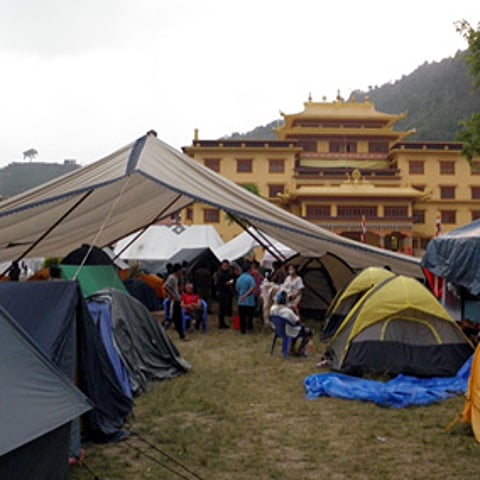To another valley
Most survivors of the cataclysmic events of 25 April that destroyed the village of Langtang, in Rasuwa district, are currently living in a relief camp in Swayambhu area, a hilltop with several Buddhist sites, located in the western part of Kathmandu Valley. The camp is inside the compound of the Yellow Gompa, a Tibetan Buddhist monastery of the Gelugpa order. Following the earthquake, the monastery has offered its compound as temporary shelter for people who have lost their homes.
Survivors began to be flown in to the camp from the village of Kyanjin Gompa in Langtang Valley from 27 April. Further up from Langtang village, the impact of the earthquake on this village is less severe than other areas in Langtang. Almost everyone who has survived has either come, or been brought, to the Yellow Gompa for temporary stay. Between five to 15 new survivors of Langtang are flown in everyday and the total number of those in the camp is now 111.

